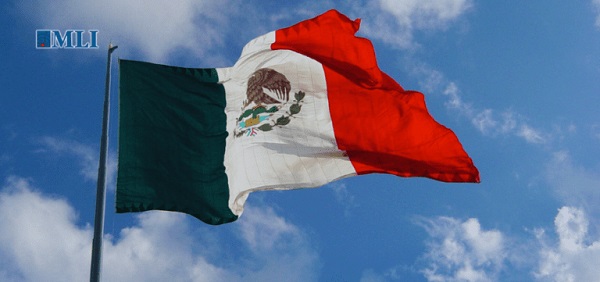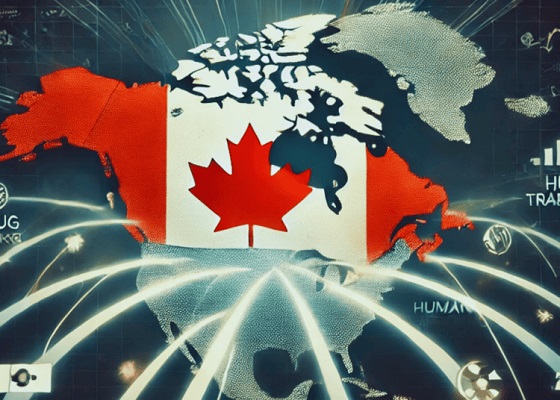Crime
Red Deer RCMP make numerous arrests in crime hot spots

Red Deer, Alberta – Red Deer RCMP made a number of arrests while conducting proactive patrols in areas known for criminal activity, and located numerous suspects who were wanted on outstanding warrants. RCMP made more arrests while conducting compliance checks on individuals known to have court imposed conditions such as curfews; these strategies are key to Red Deer’s Pinpoint crime reduction focus on repeat offenders and emerging issues. Red Deer RCMP made more arrests thanks to reports from the public regarding suspicious activity, and thank Red Deerians for their continued support and vigilance.
May 5 – 2018
At 9 pm on May 5, RCMP responded to a report of a personal robbery after a man allegedly robbed a woman of her sunglasses at knifepoint in the area of 50 Street and 51 Avenue. RCMP responded immediately and located the suspect nearby on foot; he was arrested after a brief foot chase.
21 year old Zachary John Wahobin faces the following charges:
· Criminal Code 344(1)(b) – Robbery with weapon
· Criminal Code 129(a) – Resist/ obstruct peace officer X 2
· Criminal Code 88(1) – Possession of weapon for dangerous purpose
· Criminal Code 733.1(1) – Fail to comply with probation
Wahobin was remanded to appear in court in Red Deer on May 7 and is scheduled to appear next on May 23 at 9:30 am.
May 4 – 2018
Shortly before 3 pm on May 4, Red Deer RCMP located a truck that had been stolen out of Blackfalds and used On Star to track it as the truck moved through Red Deer. When it was safe to do so, RCMP had On Star shut down the truck in the Normandeau neighbourhood and arrested the male driver after a brief foot chase. RCMP located two stolen bicycles in the back of the truck and seized what is believed to be heroin, crystal meth and marijuana, as well as pepper spray, a knife and break-in tools
29 year old Bryan Anthony Penso faces
· Criminal Code 249(1) – Dangerous operation of motor vehicle
· Criminal Code 351(1) – Possess break-in instruments
· Criminal Code 355(a) – Possession of stolen property over $5,000
· Criminal Code 355(b) – Possession of stolen property under $5,000
· Criminal Code 88(1) – Possession of weapon for the purpose of committing an offense X 2
· CDSA 4(1) – Possession of Schedule I/ Schedule II substances X 3
· TSA 51(a) – Operate vehicle without holding operator’s license
· TSA 52(1)(a) – Operate vehicle without registration
· TSA 54(1)(a) – Operate vehicle without insurance
Penso was remanded to appear in court in Red Deer on May 7 and is scheduled to appear again on May 14 at 9:30 am.
May 2 – 2018
At 5:45 am on May 2, Red Deer RCMP responded to a report of a break and enter in progress at a business in north Red Deer after a witness reported observing a male suspect climbing over a fence to access the business. RCMP responded immediately and arrested the suspect without incident.
A 30 year old man faces a charge of Criminal Code 348(1)(a) – break and enter; he is scheduled to appear in court in Red Deer on June 26. His name cannot be released at this time as that charge has not yet been sworn before the courts.
May 1 – 2018
At 6:30 pm, RCMP attended a store in response to a report of a shoplifter, and arrested a woman who was found to be in possession of a number of stolen items and was wanted on numerous outstanding warrants.
23 year old Taylor Watkins-Paul was wanted on 21 warrants out of Innisfail, Red Deer and Canmore for multiple counts of possession of stolen property, failing to comply with conditions and failing to appear in court, as well as three traffic charges of driving without insurance. She now faces an additional charge of theft under $5,000 and two counts of failing to comply with conditions. Watkins-Paul was remanded to appear in court on May 4 and is scheduled to appear again on May 11 at 9:30 am.
April 30 – 2018
At 9:30 pm on April 30, RCMP responded to a report of suspicious activity in a north-end industrial parking lot and located a suspect who was found to be breaching court-imposed conditions, including a curfew.
19 year old Austin Joseph Pollock faces two counts of Criminal Code 145(3) – fail to comply with conditions. He is scheduled to appear in court on May 29 at 8:30 am.
April 30 – 2018
Shortly before 9 am on April 30, RCMP responded to a report of suspicious activity in a vehicle parked in Oriole Park. On arrival, RCMP located a suspect in the car who was wanted on outstanding warrants and was in possession of what is believed to be methamphetamine.
25 year old Tyler James Nugent was wanted on four warrants out of Red Deer for impaired driving, driving over 0.08, failing to attend court and a traffic charge; he was wanted on five warrants out of Sundre for impaired driving, driving while unauthorized, and several other traffic charges, and another warrant out of Didsbury for failing to attend court. Nugent now faces an additional charge of CDSA 4(1) – Possession of Schedule I substance (methamphetamine). He is scheduled to appear in court in Red Deer on May 18 at 8:30 am.
April 29 – 2018
Shortly before 2:30 am on May 29, RCMP on patrol in downtown Red Deer located a suspect who was wanted on two outstanding warrants for breaching his probation. At the time of his arrest, RCMP determined that he was further breaching his probation. In addition to his warrants, 39 year old Devlin Brighar faced a new charge of breach of probation. He appeared in court in Red Deer on May 4 and those charges have now been dealt with by the court.
April 26 – 2018
The evening of April 26, members of the Red Deer RCMP crime reduction team were on proactive foot patrol in downtown Red Deer when they located a suspect in possession of fentanyl and what is believed to be methamphetamine. The suspect gave a false name but was soon identified by police.
54 year old Dereck Kirkpatrick faces two charges of CDSA 4(1) – possession of Schedule 1 substances and one charge of resisting/ obstructing a peace officer. Kirkpatrick is scheduled to appear in court in Red Deer on May 9 at 1:30 pm.
April 25 – 2018
Red Deer RCMP conducted a curfew check on April 25 and determined that the man in questions wasn’t at the residence, in violation of his court-imposed conditions. Red Deer RCMP conduct conditions checks regularly on numerous individuals as part of the Pinpoint crime reduction strategy.
29 year old Tyler Kellington faces a charge of failing to comply with probation; he made his first court appearance in Red Deer on May 4 and is scheduled to appear again on June 18 at 9:30 am.
April 24 – 2018
Shortly after 2 am on April 24, Red Deer RCMP on bicycle patrol in Riverside Meadows noted suspicious activity and, on investigation, located a suspect who was in possession of what is believed to be cocaine. The suspect was further found to be wanted on outstanding warrants out of Red Deer.
In addition to the warrants, 22 year old Alli Kevin Halkett faces one charge of CDSA 4(1) – possession of Schedule I substance. He is scheduled to appear in court in Red Deer on May 8 at 8:30 am.
April 19 – 2018
A man who was arrested on April 3 for theft of mail is now wanted on warrants after failing to appear in court on April 13 to face those charges. The charges stem from a report received by Red Deer RCMP on April 3 that a suspect was seen breaking into apartment mailboxes. RCMP attended and located the suspect nearby in possession of a number of pieces of stolen mail. RCMP took him into custody and returned the mail to its owners.
28 year old Dallas Albert Rain is wanted on warrants for the following charges:
· Criminal Code 356(1)(a) – Theft from mail under $5,000 X 5
· Criminal Code 430(4) – Mischief under $5,000 X 2
· Criminal Code 145(2)(a) – Fail to attend court
If you have information about Rain’s whereabouts please call the Red Deer RCMP complaint line at 403-343-5575.
Crime
Mexican cartels are a direct threat to Canada’s public safety, and the future of North American trade

From the Macdonald Laurier Institute
By Gary J. Hale for Inside Policy
RCMP raided a fentanyl ‘superlab’ in Falkland, BC, with ties to a transnational criminal network that spans from Mexico to China.
On October 31, residents of Falkland, BC, were readying their children for a night of Halloween fun. Little did they know that their “quaint, quiet, and low-key little village” was about to make national headlines for all the wrong reasons.
On that day, RCMP announced that it had raided a fentanyl “superlab” of scary proportions near Falkland – one that police called the “largest and most sophisticated” drug operation in Canada. Officers seized nearly half-a-billion-dollars’ worth of illicit materials, including 54 kilograms of finished fentanyl, 390 kilograms of methamphetamine, 35 kilograms of cocaine, 15 kilograms of MDMA, and six kilograms of cannabis” as well as AR-15-style guns, silencers, small explosive devices, body armour, and vast amounts of ammunition.
They also found massive quantities of “precursor chemicals” used to make the drugs. This strongly suggests that the superlab was tied into a transnational criminal network that spans from Mexico to China – one that uses North America’s transportation supply chains to spread its poisonous cargo across Canada and the United States.
The Canada-US-Mexico relationship is comprised of many interests, but the economic benefits of trade between the nations is one of the driving forces that keep these neighbours profitably engaged. The CUSMA trade agreement is the successor to NAFTA and is the strongest example globally of a successful economic co-operation treaty. It benefits all three signatories. This level of interdependence under CUSMA requires all parties to recognize their respective vulnerabilities and attempt to mitigate any threats, risks, or dangers to trade and to the overall relationship. What happens to one affects all the others.
The supply chain, and the transport infrastructure that supports it, affects the balance books of all three. While the supply chain is robust and currently experiences only occasional delays, the different types of transport that make up the supply chain – such as trucks, trains, and sea-going vessels – are extremely vulnerable to disruption or stoppages because of the unchecked violence and crime attributed to the activities of Mexican Transnational Criminal Organizations (TCOs). These cartels operate throughout Mexico, from the Pacific ports to the northern plains at the US-Mexico border.
The sophistication of the Falkland superlab strongly suggests connectivity to multi-national production, transportation, and distribution networks that likely include China (supply of raw products) and Mexico (clandestine laboratory expertise).
For most Canadians, Mexican cartels call to mind the stereotypical villains of TV and movie police dramas. But their power and influence is very real – as is the threat they pose to all three CUSMA nations.
Mexico’s cartels: a deadly and growing threat
Mexican cartels started as drug trafficking organizations (DTOs) in the 1960s. By the late 1990s they had evolved to become transnational enterprises as they expanded their business beyond locally produced drugs (originally marijuana and heroin) to include primarily Colombian cocaine that they transported through Mexico en route to the US and Canada.
Marijuana and the opium poppy are cultivated in Mexico and, in the case of weed, taken to market in raw form. While the cartels required some chemicals sourced from outside Mexico to extract opium from the poppy and convert it into heroin, the large-scale, multi-ton production of synthetic drugs like Methamphetamine and today Fentanyl expanded the demand for sources of precursor chemicals (where the chemical is slightly altered at the molecular level to become the drug) and essential chemicals (chemicals used to extract, process, or clean the drugs.)
The need to acquire cocaine and chemicals internationalized the cartels. Mexican TCO’s now operate on every continent. That presence involves all the critical stages of the criminal business cycle: production, transportation, distribution, and re-capitalization. Some of the money from drug proceeds flow south from Canada and the US back to Mexico to be retained as profits, while other funds are used to keep the enterprise well-funded and operational.
In Mexico, the scope of their activities is economy-wide; they now operate many lines of criminal business. Some directly affect Mexico’s economic security, such as petroleum theft, intellectual property theft (mainly pirated DVDs and CDs), adulterating drinking alcohol, and exploiting public utilities. Others are in “traditional” criminal markets, such as prostitution, extortion, kidnapping, weapons smuggling, migrant smuggling and human trafficking. Organized auto theft has also become another revenue stream.
Criminal Actors
The Cartel de Sinaloa (CDS or Sinaloa Cartel) and the Cartel Jalisco Nueva Generacion (CJNG) are the two principal TCO’s vying for territorial control of Mexico’s air, land, and maritime ports, as well as illegal crossing points. These points on the cartel map are known as “plazas,” and are often between formal ports of entry into the US. By controlling territories crucial for the inbound and outbound movement of drugs, precursors, people, and illegal proceeds, the cartels secretly transport illicit goods and people through commercial supply chains, thus subjecting the transportation segment of legitimate North American trade to the most risk.
That is giving the cartels the power to impair – and even control – the movement of Mexico’s legitimate trade. While largely kept out of the public domain, incidents of forced payment of criminal taxation fees, called “cuotas,” and other similar threats to international business operations are already occurring. For instance, cuotas are being imposed on the transnational business of exporting used cars from the US to Mexico. They’re also being forced on Mexican avocado and lime exporters before the cartels will allow their products to cross the border to the US and international markets. This has crippled that particular trade. Unfortunately, the Mexican government has been slow to react, and the extortion persists throughout Mexico. It is worth repeating – these entirely legitimate goods reach the market only after cartel conditions are met and bribes paid.
The free trade and soft border policies of the US of recent years have allowed cartel operatives to enter that country and work the drug trade with limited consequence. In May, the U.S. Drug Enforcement Administration (DEA) published the National Drug Threat Assessment 2024, where it reported that the Jalisco and Sinaloa cartels operate in all 50 US states and are engaged in armed violence in American cities as they fight for market shares of the sales of Methamphetamine, Fentanyl, and other drugs sourced from Mexico.
The DEA’s findings should sound alarms in Canada. Canada and the US have similar trade and immigration policies, which allow the Mexican cartels to easily enter and control the wholesale component of the drug trade. The long-term effects of the drug trade are the billions of dollars gained that allow for the corruption of government officials. Canada should be on guard: Mexican drug cartels in Canada could begin to not only kill ordinary Canadians by knowingly selling them deadly drugs like Fentanyl – their operatives can also embed themselves in Canadian society, as they have in the US, leading to ordinary citizens on Canadian streets being victimized by the armed violence cartels regularly use to assert their position and power.
Organized crime and Mexican governance
Canada faces these threats directly, but the indirect ones that the cartels present to Mexican governance are no less consequential to Canada in the long term – and likely sooner. Illicit agreements between corrupt Mexican government officials and the cartels assure that the crime organizations retain control of territory and have freedom to operate.
That threat is becoming increasingly existential. Cartel fighters are well disciplined, well equipped and strong enough to challenge Mexico’s military, currently the government’s main tool to fight them. Should the TCOs come to dominate Mexican society or gain decisive influence over government policy, Mexico’s government risks being declared a narco-democracy and the US may come to see the cartels as a threat to national security. That in turn could lead to a US military intervention in Mexico – not an outcome desired by either side.
While that scenario may be considered extreme, it is not as far from reality as many may think. While in many respects the US-Mexico trading relationship remains unchanged, the overall political context has become testy – and could be a real flashpoint for the incoming Trump administration.
Political developments in Mexico have played a role. After his election in 2018, former Mexican President Andrés Manuel López Obrador (commonly referred to his initials, AMLO) demonstrated a disdain for all things North American. This included frequent complaints of US interference or violation of Mexican sovereignty – complaints that were more about keeping Mexican government domestic actions out of the public eye. To retain a shroud of secrecy over government corruption, Mexico under Amlo started in 2022 to limit the activities and numbers of US federal law enforcement agencies operating there, particularly the FBI, DEA, ATF and ICE. These agencies formerly enjoyed a close relationship with the Mexican Federal Police – a force AMLO disbanded and replaced with the National Guard. The AMLO administration reduced the number of US assets and agents in Mexico, particularly singling out the DEA for the most punitive restrictions.
During his administration, AMLO placed the army and navy in charge of all ports of entry and gave them responsibility for all domestic public safety and security by subordinating the Guardia Nacional (GN), or National Guard, to the army. The GN, the only federal law enforcement agency, has been taken over by military officials who are sometimes corrupt and in league with the cartels.
Mexican President Claudia Sheinbaum, who took office in 2024, has continued AMLO’s organizational moves. Sheinbaum comes from the same political party and has so far extended carte blanche to the military, whose administration is opaque and now operates with impunity, under the guise of “national security” and “sovereignty” concerns.
It is expected that Sheinbaum will continue to shield American eyes from Mexico law enforcement and judicial affairs. The fear in the US law enforcement and national security community is that Sheinbaum may even declare DEA non grata, much as then Venezuelan President Hugo Chavez in 2005 and Bolivian President Evo Morales in 2008 did in their countries. Both were anti-American leftists of the same mindset as AMLO and Sheinbaum, who feared detection of their connections to the illegal drug trade.
Sheinbaum has publicly demonstrated disinterest in the consistent application of the rule of law against the TCOs by stating that she will continue the “hugs not bullets” (“abrazos, no balazos”) non-confrontational, non-interventional posture towards organized crime. Agreements with corrupt government officials will allow the cartels to expand their business and to operate with impunity. Through intimidation, bribery, and murder, the cartels affect decision making at the municipal, state, and federal levels of Mexican government. That leverage, while performed outside the public eye, has the potential to negatively affect supply and demand among the three countries at the very least, and at worst, to signal that cartels in Mexico are directly or indirectly involved in the formulation of government security, immigration, drug, and trade policy.
AMLO enacted constitutional changes that will provide Sheinbaum with the powers of a dictator, giving her administration unchecked control of the executive, legislative, and judicial branches of government. As a result, the judiciary in Mexico is in crisis mode with 8 of 11 Supreme Court Justices resigning in October 2024 to protest the unconstitutional disregard for due process that started with AMLO and continues with Sheinbaum thanks to a “voting for judges” law that she and AMLO have rammed into operation without debate. This development portends even more corruption.
Without the existence of an independent judicial system, these institutional changes could give pause to US and Canadian negotiators when it comes time to renew CUSMA in 2026.
Beyond 2025: Mexican organized crime as a threat to the US and Canada, and Greater North American implications
Most worrying, the cartels will be in a yet stronger position to affect and even dictate the pace and volume of legitimate trade between the US and Mexico under Sheinbaum. This makes Mexico the weakest link among the three CUSMA members.
The US and Canada should therefore be concerned about the strength and power of the cartels because the current trajectory could provide them a greater role in Mexico’s performance as a trade partner. Should this trend continue, the US would likely begin to see Mexico through the lens of a threat to critical components of its national security: 1) the public safety of US citizens being killed in epidemic proportions by the drugs produced by citizens of Mexico; 2) the negative impact or increased cost of commerce that supplies goods to the American market; and 3) the CUSMA relationship that sustains the economic strength of all three participating countries.
This worrisome evolution requires proactivity by Canada and the US to insist that Sheinbaum reverse the gains that the cartels have made to influence policy and erode the government’s monopoly on territorial control and the use of violence, and reverse Mexico’s limits on drug enforcement co-operation with what should be its partners to the north. Pressure should also be applied to demand a return to a drug policy model that includes international law enforcement co-operation and a continuation towards the transformation of the Mexican judicial system from a mixed inquisitorial or accusatorial system to an adversarial system that employs the use of juries, witness testimony, oral hearings and trials, and cross-examination of witnesses, as opposed to a system where cartel-influenced elections could dictate judicial outcomes.
The implications of the further development of a Mexico narco-democracy for US-Mexico-Canada relations would be devastating. Co-operation on public safety and security would cease completely, allowing the cartels to take full control of commercial supply lines, significantly reducing trade between the three nations – likely causing the CUSMA trade deal to fracture until governance returned to duly elected civilian officials.
Continental security and Canada’s contribution
The continued success of CUSMA lies with Mexico more than any other country. Should Mexico continue on its path to autocracy, it could upset the trade deal, crucial to the prosperity of all three countries. Canada is not immune from what on the surface may appear to be mostly bilateral, US-Mexico issues, because, regardless of the commodity – whether it’s consumables or manufactured items – the cartels are positioned and empowered to affect imports, exports, trade, and migration throughout North America.
For the foreseeable future, Mexico is not going to voluntarily change its security posture. This enables the cartels to remain persistent threats, especially to trade. Canada and the US need to continue to jointly insist that Mexico take a stronger stance against organized crime and that it take steps to strengthen the judiciary and the rule of law in that country.
Gary J. Hale served 31 years in the Drug Enforcement Administration (DEA), retiring as an executive-level intelligence analyst. In 2010, he was appointed as Drug Policy fellow and Mexico Studies Scholar at the James A. Baker III Institute for Public Policy at Rice University in Houston, Texas.
Business
Canada’s struggle against transnational crime & money laundering

From the Macdonald-Laurier Institute
By Alex Dalziel and Jamie Ferrill
In this episode of the Macdonald-Laurier Institute’s Inside Policy Talks podcast, Senior Fellow and National Security Project Lead Alex Dalziel explores the underreported issue of trade-based money laundering (TBML) with Dr. Jamie Ferrill, the head of financial crime studies at Charles Sturt University in Canberra, Australia and a former Canada Border Services Agency officer.
The discussion focuses on how organized crime groups use global trade transactions to disguise illicit proceeds and the threat this presents to the Canada’s trade relationship with the US and beyond.
Definition of TBML: Trade-based money laundering disguises criminal proceeds by moving value through trade transactions instead of transferring physical cash. Criminals (usually) exploit international trade by manipulating trade documents, engaging in phantom shipping, and altering invoices to disguise illicit funds as legitimate commerce, bypassing conventional financial scrutiny. As Dr. Ferrill explains, “we have dirty money that’s been generated through things like drug trafficking, human trafficking, arms trafficking, sex trafficking, and that money needs to be cleaned in one way or another. Trade is one of the ways that that’s done.”
A Pervasive Problem: TBML is challenging to detect due to the vast scale and complexity of global trade, making it an attractive channel for organized crime groups. Although global estimates are imprecise, the Financial Action Task Force and The United Nations Office on Drugs and Crime (UNODC) suggests 2-5% of GDP could be tied to money laundering, representing trillions of dollars annually. In Canada, this could mean over $70 billion in potentially laundered funds each year. Despite the scope of TBML, Canada has seen no successful prosecutions for criminal money laundering through trade, highlighting significant gaps in identifying, investigating and prosecuting these complex cases.
Canada’s Vulnerabilities: Along with the sheer volume and complexity of global trade, Canada’s vulnerabilities stem from gaps in anti-money laundering regulation, particularly in high-risk sectors like real estate, luxury goods, and legal services, where criminals exploit weak oversight. Global trade exemplifies the vulnerabilities in oversight, where gaps and limited controls create substantial opportunities for money laundering. A lack of comprehensive export controls also limits Canada’s ability to monitor goods leaving the country effectively. Dr. Ferrill notes that “If we’re seen as this weak link in the process, that’s going to have significant implications on trade partnerships,” underscoring the potential political risks to bilateral trade if Canada fails to address these issues.
International and Private Sector Cooperation: Combating TBML effectively requires strong international cooperation, particularly between Canada and key trade partners like the U.S. The private sector—including freight forwarders, customs brokers, and financial institutions—plays a crucial role in spotting suspicious activities along the supply chain. As Dr. Ferrill emphasizes, “Canada and the U.S. can definitely work together more efficiently and effectively to share and then come up with some better strategies,” pointing to the need for increased collaboration to strengthen oversight and disrupt these transnational crime networks.
Looking to further understand the threat of transnational organized crime to Canada’s borders?
Check out Inside Policy Talks recent podcasts with Christian Leuprecht, Todd Hataley and Alan Bersin.
To learn more about Dr. Ferrill’s research on TBML, check out her chapter in Dirty Money: Financial Crime in Canada.
-

 Brownstone Institute9 hours ago
Brownstone Institute9 hours agoThe Most Devastating Report So Far
-

 Economy21 hours ago
Economy21 hours agoCOP 29 leaders demand over a $1 trillion a year in climate reparations from ‘wealthy’ nations. They don’t deserve a nickel.
-

 Censorship Industrial Complex13 hours ago
Censorship Industrial Complex13 hours agoAnother Mass Grave?
-

 Alberta12 hours ago
Alberta12 hours agoMAiD In Alberta: Province surveying Albertans about assisted suicide policies
-

 Alberta19 hours ago
Alberta19 hours agoOn gender, Alberta is following the science
-

 Energy20 hours ago
Energy20 hours agoOttawa’s proposed emission cap lacks any solid scientific or economic rationale
-

 Bruce Dowbiggin8 hours ago
Bruce Dowbiggin8 hours agoCHL Vs NCAA: Finally Some Sanity For Hockey Families
-

 Brownstone Institute2 days ago
Brownstone Institute2 days agoFirst Amendment Blues




